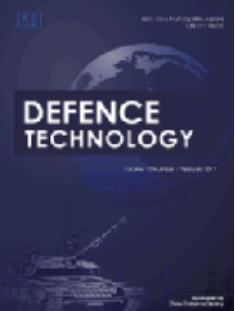基于蒙特卡罗模拟的水下无线光通信链路优化新技术
IF 5.9
Q1 ENGINEERING, MULTIDISCIPLINARY
引用次数: 0
摘要
水下通信链路(UCL)是水下无线光通信(UWOC)系统的关键组成部分,需要优化设计以减轻海水中固有的高功率衰减。为了确保最佳UCL设计的可靠性,必须考虑海水通道中的三种主要散射机制:前向散射(FSC)、后向散射(BSC)和各向同性散射(ISC)。本研究引入了一种新的基于离散方程的光子跟踪模型,便于蒙特卡罗模拟(MCS)评估不同散射机制对接收光子分布的影响。采用三个不同的散射区贡献权重(SRCW)概率集,每个概率集代表由特定散射区主导的不同UCL操作配置。所提出的建模方法能够全面评估接收光脉冲的时间特性、信道损耗和时间扩展,最终确定最佳的UCL设计参数。本研究的主要发现包括:(1)增强FSC体制优势导致在链路跨度和小视场(FOV) <上产生准光波导效应;25°,与沿海海水相比,海港海水显著改善了航道性能。(2)设计良好的UCL具有较小的FOV (<25°),可以最大限度地减少通道损失和时间扩展,确保在沿海和港口海水中的高容量和高效性能。(3)当BSC和ISC的贡献超过FSC的主导地位时,接收到的光脉冲经历了显著的时间展宽,特别是在较大的视场角(>25°)和延长的链路跨度时。(4)基于mcs的离散方程为均匀和非均匀水下通道的光子传播模拟提供了一个简单而稳健的模型。这些见解有助于开发更高效、更可靠的符合军事标准的UCL设计,通过在各种水下环境中给定的有限光功率下提高UWOC系统在更长的链路跨度上的性能。本文章由计算机程序翻译,如有差异,请以英文原文为准。
Novel optimization techniques for underwater wireless optical communication links: using Monte Carlo simulation
The Underwater Communication Link (UCL) is a crucial component of Underwater Wireless Optical Communication (UWOC) systems, requiring optimised design to mitigate the high power attenuation inherent in seawater. To ensure the reliability of an optimal UCL design, it is essential to account for the three primary scattering regimes: forward scattering (FSC), backward scattering (BSC), and isotropic scattering (ISC) in seawater channels. This study introduces a new photon-tracking model based on a discrete equation, facilitating Monte Carlo Simulation (MCS) to evaluate how different scattering regimes influence received photon distribution. Three distinct Scattering Regime Contribution Weight (SRCW) probability sets were employed, each representing different UCL operational configurations dominated by specific scattering regimes. The proposed modeling approach enables a comprehensive assessment of the temporal characteristics of received optical pulses, channel loss, and time spread—ultimately defining the optimal UCL design parameters. The key findings of this study include: (1) Enhancing the FSC regime dominance leads to a quasi-light waveguide effect over link spans and small Fields of View (FOV) < 25°, significantly improving channel performance in Harbor seawater compared to Coastal seawater. (2) A well-designed UCL with a small FOV (<25°) can minimise channel loss and time spread, ensuring high capacity and efficient performance in both Coastal and Harbor seawaters. (3) When BSC and ISC contributions exceed FSC dominance, the received optical pulse undergoes significant temporal broadening, particularly for larger FOV angles (>25°) and extended link spans. (4) The developed novel MCS-based discrete equation provides a simple yet robust model for simulating photon propagation in both homogeneous and inhomogeneous underwater channels. These insights contribute to developing more efficient and reliable UCL designs with military standards by enhancing UWOC system performance over a longer linkspan for a given limited optical power across various underwater environments.
求助全文
通过发布文献求助,成功后即可免费获取论文全文。
去求助
来源期刊

Defence Technology(防务技术)
Mechanical Engineering, Control and Systems Engineering, Industrial and Manufacturing Engineering
CiteScore
8.70
自引率
0.00%
发文量
728
审稿时长
25 days
期刊介绍:
Defence Technology, a peer reviewed journal, is published monthly and aims to become the best international academic exchange platform for the research related to defence technology. It publishes original research papers having direct bearing on defence, with a balanced coverage on analytical, experimental, numerical simulation and applied investigations. It covers various disciplines of science, technology and engineering.
 求助内容:
求助内容: 应助结果提醒方式:
应助结果提醒方式:


